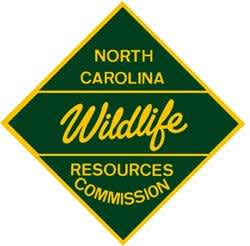Sea Turtles Fared Well along North Carolina’s Coast in 2012
OutdoorHub 01.07.13

2012 was a good year for sea turtle nesting on North Carolina’s coast.
From late April until mid-September, sea turtles laid 1,103 nests along North Carolina’s coast — up from 967 in the previous year and 883 in 2010. This nesting season’s numbers were the second highest since biologists with the N.C. Wildlife Resources Commission began statewide tracking of nests in the mid-90s, according to Sea Turtle Biologist Matthew Godfrey.
While four species of the giant reptiles are known to nest on North Carolina’s beaches, loggerhead sea turtles’ nests make up the vast majority of nests each year. Green sea turtles, leatherbacks and, on rare occasion, the Kemp’s ridley — the smallest of all sea turtles — also nest on North Carolina’s beaches, but in much smaller numbers. A fifth sea turtle species, the hawksbill, is known to visit North Carolina waters, but no nests have been documented on the state’s beaches. All are listed as either threatened or endangered under the U.S. Endangered Species Act.
The 2012 boost in numbers from the previous two years is encouraging, but may not mean much statistically because fluctuations in nests from year to year are common, Godfrey said.
“On average, around 750 loggerhead nests are laid every year in North Carolina, but there is great fluctuation across years,” Godfrey said. “For instance, 2012’s total was the second largest on record with 1,069 loggerhead nests, and 1999 was the best on record with 1,140 documented nests. However, 2004 was the lowest year on record with only 333 loggerhead nests counted.”
The wide variation in nest numbers from year to year is likely due to several factors. Most female sea turtles rarely nest in consecutive years. Rather, they return every second or third year to reproduce.
“The exact timing is likely related to the environment and habitat quality on their foraging grounds,” Godfrey said. “When their prey is abundant, they can more quickly build up the energy reserves needed for their reproductive migrations that may span hundreds or thousands of miles.”
Godfrey also said that higher than average numbers of nests in 2012 were observed in South Carolina, Georgia and Florida.
Not only were nest numbers above average, but also hatching success of those eggs. Godfrey attributes a relatively mild tropical storm season in part for the production of more than 90,000 hatchlings on North Carolina’s beaches. In previous years, tropical storms and hurricanes have drowned or washed away developing sea turtle eggs along North Carolina’s coast.
An additional threat to incubating eggs on beaches is predation by foxes and raccoons, although most nests are protected with wire mesh that covers the eggs to deter these predators.
North Carolina’s southern beaches had the most nests per mile while northern beaches had the lowest nesting densities. The highest nest density was on Oak Island and Bald Head Island on either side of the Cape Fear River inlet near Wilmington.
The reasons why female sea turtles prefer one beach for nesting more than another remain a mystery, says Godfrey.
“Regardless, all ocean-side sandy beaches in North Carolina are visited by nesting female sea turtles in the summer months, and all receive at least a few nests,” he said.
The N.C. Sea Turtle Protection Program
Monitoring sea turtle activity along the 330-plus miles that make up the Tar Heel State’s coast is a daunting task. So daunting, in fact, that it requires substantial help from more than 1,000 volunteers, cooperators from other state and federal natural resources agencies, and private organizations to patrol the beaches during the nesting season, which runs from mid-May to as late as mid-October in some years.
This collaborative effort, known as the N.C. Sea Turtle Protection Program, began in 1983 as a way to lend a helping hand to sea turtles that nest on North Carolina beaches.
Each year, the Wildlife Resource Commission coordinates a network of volunteers to monitor sea turtle nesting activity, protect the nests during the 50- to 60-day incubation period, document reproductive success and mortality and protect habitat. Volunteers also comb the shores outside of the nesting season looking for any activity or signs of sea turtles and respond to calls of dead, injured or sick turtles that may have washed ashore.
These yearly monitoring efforts provide critical data that are needed to track sea turtle population trends — not just in North Carolina but around the world. Sea turtles are highly migratory, swimming hundreds, if not thousands of miles, each year moving between nesting and foraging grounds and, seasonally, to warmer waters. The total number of turtles, worldwide, is difficult to count so biologists count nests using the same monitoring methods every year. Biologists use the trend of these annual nest counts to determine the trend of turtle populations.
Download the Sea Turtles in North Carolina fact sheet for more information, including 10 things the public can do to help sea turtles nesting on North Carolina’s beaches.
Funding for the Wildlife Resource Commission’s work with sea turtles comes from cooperative grants from the U.S. Fish and Wildlife Service and National Marine Fisheries Service, and from the Nongame and Endangered Wildlife Fund, which supports wildlife research, conservation and management for animals that are not hunted and fished. Although tax check-off donations target projects benefiting nongame animals and their habitats, game species such as deer, turkey and bear also benefit because they share many of these same habitats.
North Carolinians can support this effort, as well as other nongame species research and management projects in North Carolina, by:
- Donating through the Tax Check-off for Nongame and Endangered Wildlife on their N.C. State Income tax form;
- Registering a vehicle or trailer with a N.C. Wildlife Conservation license plate.
- Donating online at www.ncwildlife.org/give.

